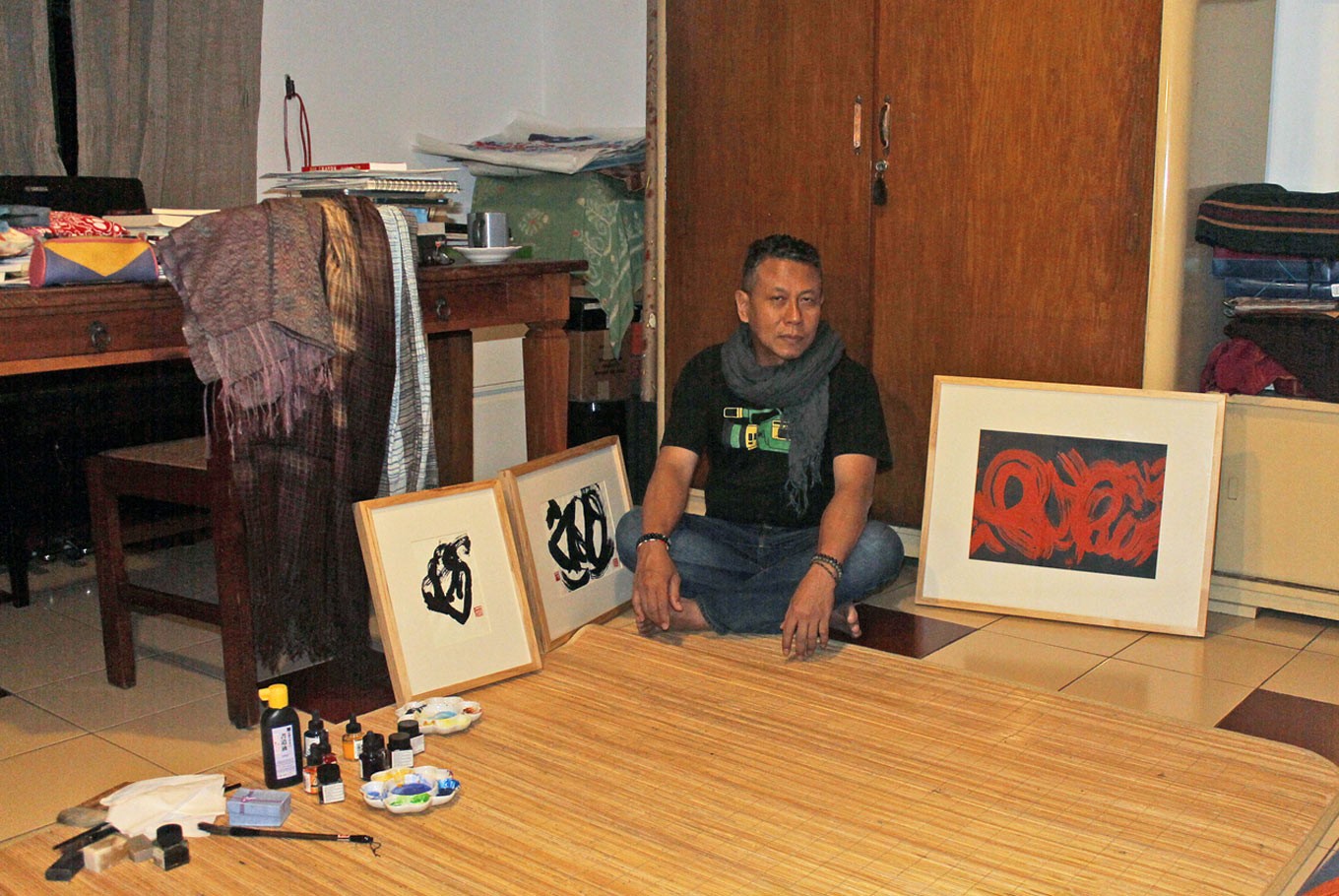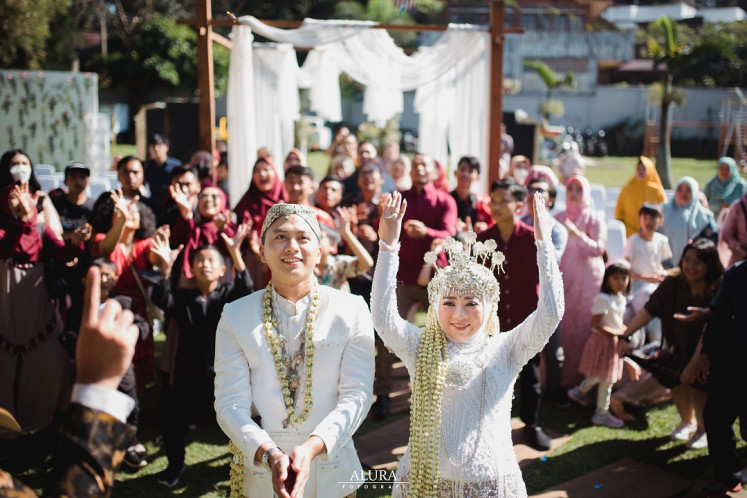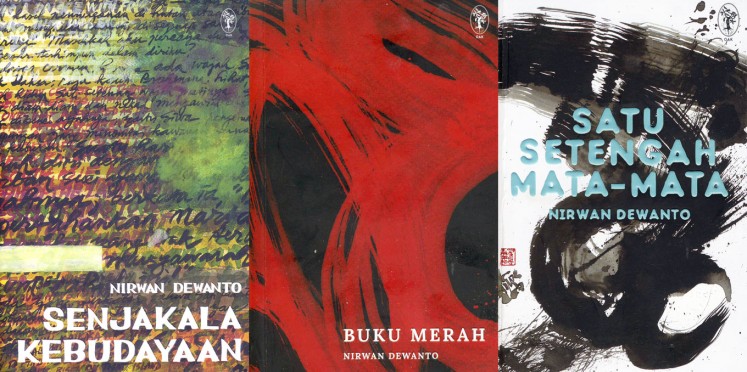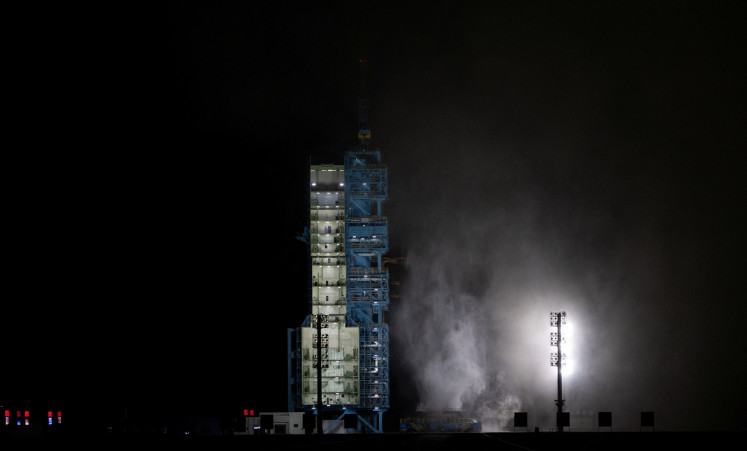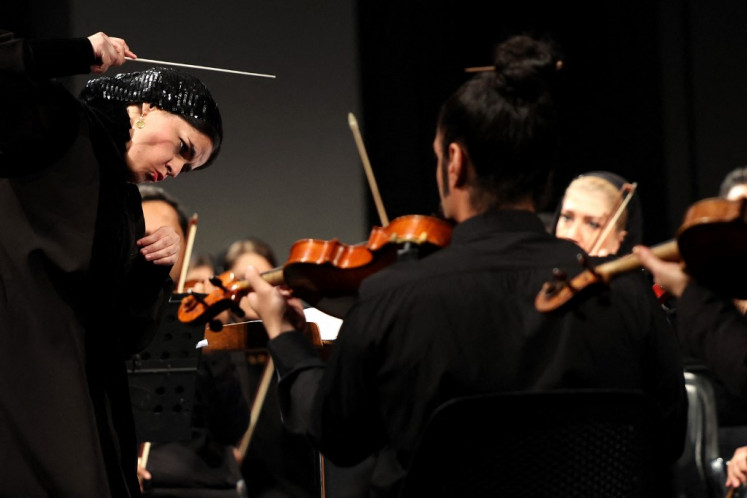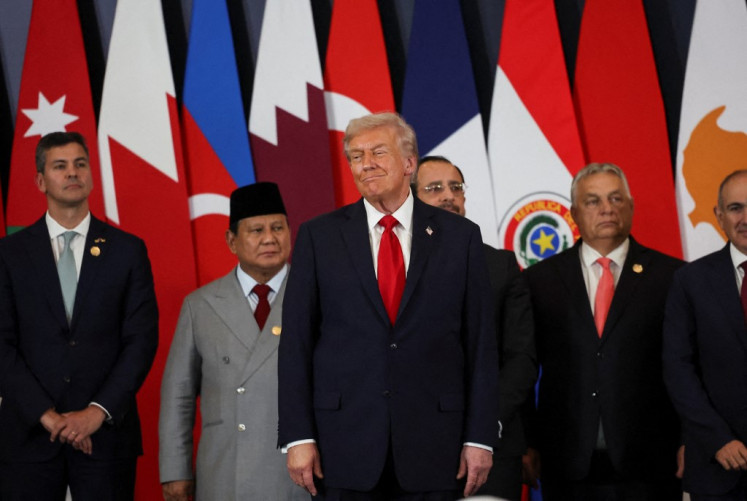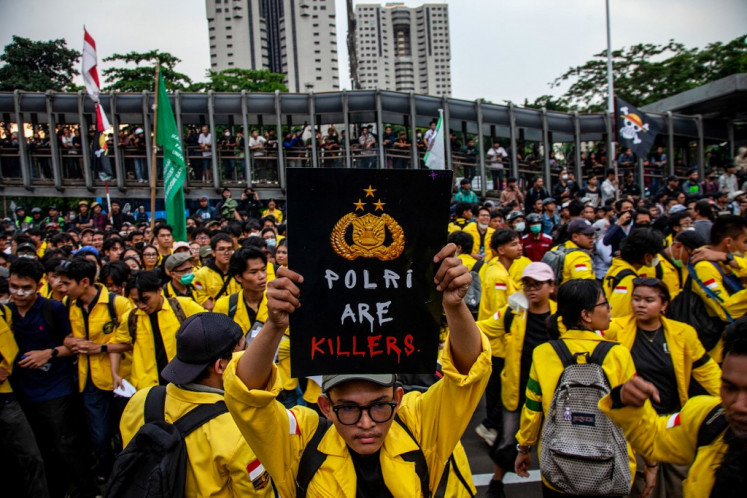Popular Reads
Top Results
Can't find what you're looking for?
View all search resultsPopular Reads
Top Results
Can't find what you're looking for?
View all search resultsNirwan Dewanto straddling three worlds
Change text size
Gift Premium Articles
to Anyone
Indonesian writer Nirwan Derwanto talks about his works in visual arts, art criticism and poetry.
Nirwan, mostly known for his poetry, has launched a series of works in the world of both literature and visual arts.
From Sept. 2 to 11 last year, Nirwan organized an exhibition at the Dia.Lo.Gue artspace in Kemang, South Jakarta, in conjunction with the launch of his book, Satu Setengah Mata-Mata (One-and-a-Half Spies, OAK Publishing, 2016), a collection of essays on visual arts.
He then presented an exhibition called Écriture from May 19 to June 19 this year in YATS colony, Yogyakarta, in conjunction with the launch of his long-form prose poem book called Buku Merah (Red Book, OAK Publishing, 2017).
Both showcase the author’s artworks in forms of graffiti, quasi-calligraphy, handwriting archives and many more.
Nirwan, who exhibited his artworks for the first time, said the decision was spontaneous.
“I walked inside Dia.Lo.Gue last year. I saw these transparent tables as well as its walls, with their empty gaps. I began to think that I could install my hanging scrolls on these empty walls, while exhibiting some archives on the tables,” Nirwan told The Jakarta Post in a recent interview.
Nirwan was able to create most of the works exhibited in both shows in the past three years thanks to a sudden spurt of inspiration upon observing several exhibitions overseas and a number of handwritten notes on collected works within the last three decades.
One of them was an exhibition called Out of Character: Decoding Chinese Calligraphy showcased in the Metropolitan Museum of Art in New York, featuring Chinese paintings, including some calligraphy that originated as far back as 500 years ago.
Books by Nirwan Dewanto (Nirwan Dewanto/File)Nirwan, who was born in 1961 in East Java and studied geology at the Bandung Institute of Technology (ITB) in the 1980s, said that he got exposed to the artwork created by Indonesian painters like Tisna Sanjaya and Dede Eri Supria during his days as a college student.
“I went to their studios to observe their creative process, which added to my artistic sensibility, in addition to tons of books on visual-art history and theories that I had read at the time,” he said.
Then he started to write art reviews and critical essays for Kompas daily newspaper and Tempo weekly magazine in the early 1990s, while helping his friends write their program books and exhibition catalogs. These pieces are anthologized in Satu Setengah Mata-Mata and Senjakala Kebudayaan(Culture’s Twilight; 1994, republished in 2017 by OAK Publishing).
This endeavor to study visual arts runs parallel with Nirwan’s poetic explorations.
According to Nirwan, when he was in junior high school, his parents started to buy him books by Indonesia’s literary giants — in prose and poetry — but also translations of world literary works that were published by Pustaka Jaya at that time. Around the same time, he started to write his own poetry as well, inspired by those books.
He seemed to find it hard to answer when the Post asked him a couple times to name some writers who acted as notable inspirations for him.
“A person who writes poetry can’t be separated from the poets that have come before him, who are writing in the same language. Strong poets are able to invent their own language style and yet they are interconnected. We know Amir Hamzah inspired Chairil Anwar, who then inspired Sapardi Djoko Damono, who then inspired Joko Pinurbo,” he said.
Nirwan, who received the Khatulistiwa literary prize for poetry in 2008 and 2010 for Jantung Lebah Ratu (Queen Bee’s Heart) and Buli-Buli Lima Kaki (The five-footed jug), said the ability to create one’s own distinctive writing style was the trickiest process that any literary writer had to go through.
Although poetry and essay might look like two very different writing forms, he said that great poets were the ones who could express their thoughts in an articulate manner through essays.
The author said that his poems were often described as “complicated” by readers, but he himself said that the core of his poetry was his process in capturing an image, whose visual form he could bend according to his own desire.
Some of his poems, like Pih and Belaka (Only) are parodies of those that have been written by Sapardi Djoko Damono, while some others reinterpret fable stories and even fast-moving consumer goods advertisements. He has also reinterpreted Amir Hamzah’s poems.
“I’m an antiromantic who, instead of exploring my own emotions and feelings through poetry, decides to be detached from an object, to let it speak for itself,” Nirwan said.

